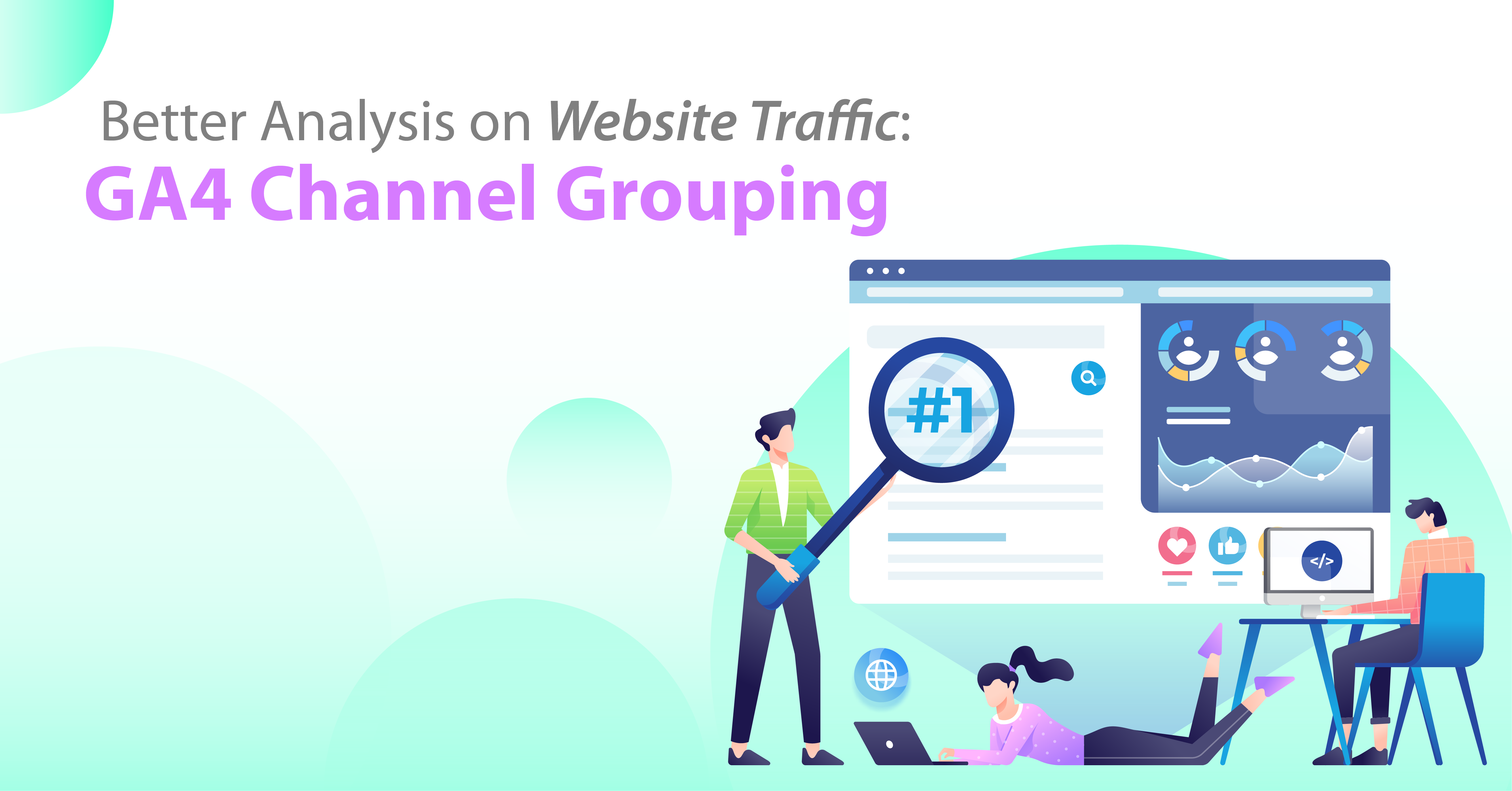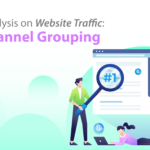One of the main goals of Google Analytics is to identify the most effective channels, advertising campaigns, and content for attracting new customers or traffic. To decide how best to allocate resources or marketing budgets for a better return on investment, it’s important to understand the quality of traffic from each channel.
As I mentioned in my other article, “Mastering Google Analytics 4: The Definitive GA4 Setup Tutorial” you can assess traffic quality in the Acquisition Tab of Google Analytics 4.

Understanding traffic can be quite complicated, but the quickest and simplest way is to understand the Default Channel Grouping dimension. Today, I’ll guide you through the default channel groupings in Google Analytics. However, before diving in, I recommend reading my other article, “The Basics of Traffic Tracking: What is UTM?” which will help you better understand the upcoming content.
The Most Commonly mentioned Channel Grouping in GA4
1. Direct Traffic
Direct traffic refers to the visits that occur when people enter your website’s URL directly into their browser.
This includes visits from people who have bookmarked your webpage or added it to their favorites and later visit the page through these bookmarks or favorites. Additionally, if someone shares a link with you through instant messaging apps like WhatsApp or Facebook Messenger, and you click on that link to visit the website, it is also considered direct traffic.
Typically, direct traffic is an indicator of brand recognition or repeat customer visits. An increase in your direct traffic usually signifies a boost in your brand’s visibility or that you are gaining more returning customers.

2. Organic Search Traffic
Organic search traffic refers to the visits that occur when people click on natural (non-paid) search results on a search engine results page (SERP) and subsequently visit your website. This type of traffic originates from unpaid search results, which is distinct from the traffic generated through paid search ads.
For example, Terrence searches for the keyword “gdn” on Google, sees the search results, and then clicks on one of the natural search results, leading him to your website page.
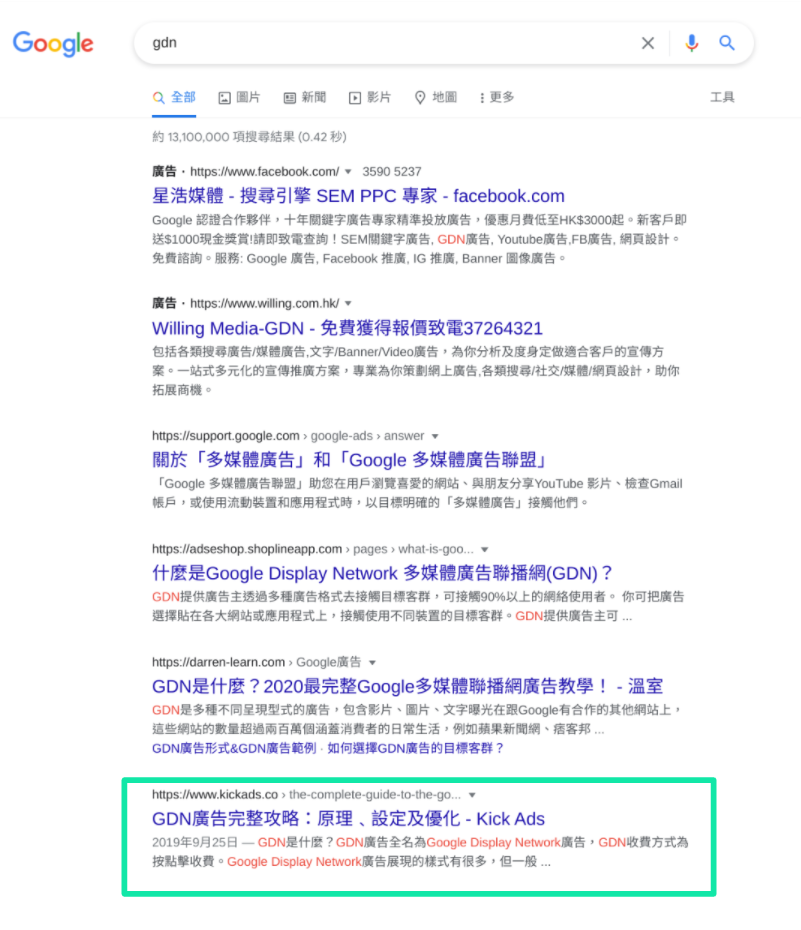
3. Paid Search Traffic
Paid search traffic is generated from clicks on search as, primarily from Google Search Ads or Bing Search Ads.
When people search on Google or other search engines and click on the paid search results marked as “Ads” on the search engine results page (SERP), those clicks contribute to paid search traffic.
However, there’s a situation to be aware of: if your Google Ads aren’t set up with Auto Tagging, your paid search traffic may be incorrectly categorised as organic traffic. Auto Tagging is a default setting in Google Ads, and typically, unless there’s an operational error, this issue should not arise.
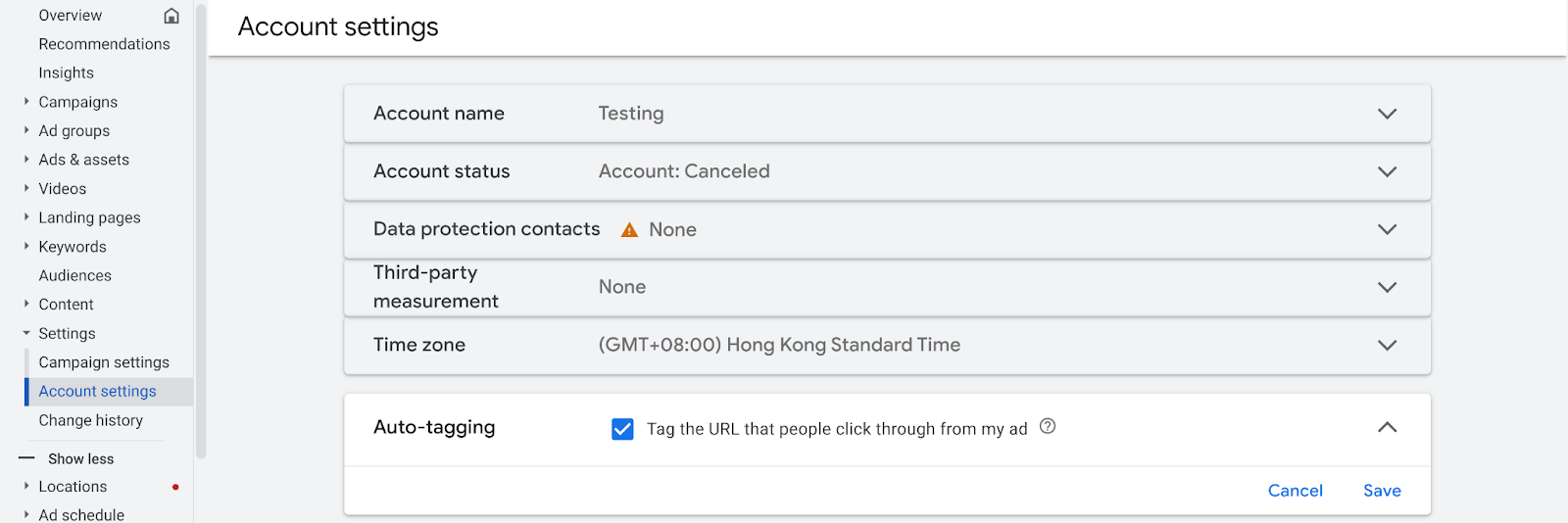
For example, Terrence searches for “kickads” and clicks on the “Ad” for kickads.co displayed in the search engine results page.
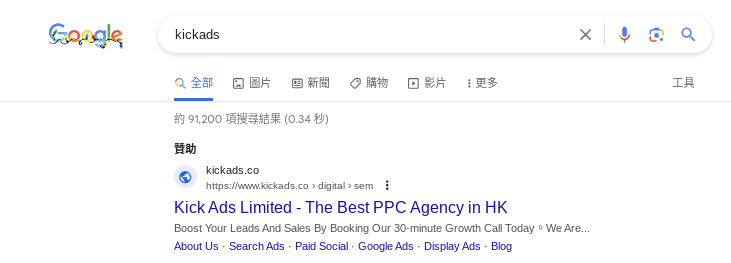
4. Organic Social/Paid Social Traffic
Social traffic originates from social networks. When people share and click on links on platforms like Facebook, Twitter, Instagram, and LinkedIn, it generates social traffic. It’s important to note that not all traffic from social media is classified as social traffic by Google, but the traffic from most well-known social platforms (like Pinterest, Reddit, and Quora) is included in Google’s social traffic category.
In Google Analytics 4 (GA4), social traffic is divided into Organic Social Traffic and Paid Social Traffic. Typically, if you post a link directly on a social media platform and someone clicks on it, those clicks are automatically categorised as organic social traffic.
Paid social traffic generally refers to traffic gained through ads placed on social media platforms. To accurately identify which traffic is paid social traffic, you should manually add UTM parameters to your links for tracking purposes.

5. Display Traffic
If you use Google’s GDN (Google Display Network) ads, simply enable the Auto Tagging feature(Default). This will automatically categorise the clicks from display ads as Display Traffic, which is the traffic from the Google Display Network.
For display ads from other platforms, you will likely need to manually add UTM parameters to your links. This ensures that you can accurately track and analyse the visitors coming from these ads.

6. Paid Video Traffic
If you use Google’s Youtube ads, simply enable the Auto Tagging feature(Default). This will automatically categorise the clicks from Video ads as Paid Video Traffic.
For Video ads from other platforms, you will likely need to manually add UTM parameters to your links. This ensures that you can accurately track and analyse the visitors coming from these ads.

7. Paid Shopping Traffic
If you use Google’s Shopping ads, simply enable the Auto Tagging feature(Default). This will automatically categorise the clicks from Shopping ads as Paid Shopping Traffic.
For Shopping ads from other platforms, you will likely need to manually add UTM parameters to your links. This ensures that you can accurately track and analyse the visitors coming from these ads.

8. Cross-network Traffic
If you use Google’s Demand Gen and Performance Max ads, just select the Auto Tagging feature (which is the default setting), then the traffic generated from these ads will automatically be categorised as Cross Network Traffic.

9. Organic Video Traffic
Organic Video is the channel by which users arrive at your site/app via non-ad links on video sites like YouTube, TikTok, or Vimeo.
In most cases, you don’t need to manually add UTM parameters (used for tracking and analysis) to these links, as Google is typically able to automatically identify the sources of this type of traffic

10. Organic Shopping Traffic
Organic Shopping is the channel by which users arrive at your site/app via non-ad links on shopping sites like Amazon or ebay.
In most cases, you don’t need to manually add UTM parameters (used for tracking and analysis) to these links, as Google is typically able to automatically identify the sources of this type of traffic.

11. Email Traffic
Email traffic refers to the visits generated from your email marketing campaigns.
It’s important to note that not all link clicks in emails are automatically counted as email traffic. To ensure that these clicks are correctly categorized under email traffic, you need to integrate your Email Direct Marketing (EDM) software with Google Analytics, or enable Autotagging in your EDM Tool, , or manually add UTM parameters to your links, making sure the medium parameter is set to “email” (be aware of case sensitivity).
If you do not do this, Google Analytics 4 may count these link clicks (visiting your website) as direct traffic. This can affect the accuracy of your data and influence your decision-making, potentially leading you to believe that your email campaigns are ineffective and making incorrect conclusions based on that assumption.

12. Affiliate Traffic
If you’re not familiar with affiliate marketing, I recommend reading Affiliate Marketing 101: What it is and How to Get Started
In simple terms, affiliate marketing involves affiliate partners charging you based on the traffic they direct to your site. Many affiliate platforms track the performance of each affiliate website and allocate commissions based on the traffic they generate for you.
Generally, these affiliate platforms are more accurate in tracking the actual transaction amounts or values than Google Analytics. However, you can still track other metrics from these affiliates in Google Analytics, such as engagement and duration of engagement. To do this, you should create unique UTM parameters for each affiliate partner.
For a better understanding of how to create UTM parameters for affiliate traffic, I strongly recommend watching this video.

13. Referral Traffic
Referral traffic is the kind of traffic that comes from other websites.
This usually happens when other individuals or organisations write content about you, your products, or services on their own websites. When visitors from these websites click on links and visit your website, it generates referral traffic.
In Google Analytics, these external websites linking to your site are called referral domains, and the corresponding traffic is categorised as referral traffic. This type of traffic is an important indicator of how well-known and influential your website is outside of your own domain.
14. Other Traffic
Other traffic refers to the traffic that doesn’t fit into any of Google Analytics’ predefined channel grouping definitions. When you use custom parameters, like UTM tags, to share links but these parameters don’t align with Google’s guidelines, Google Analytics 4 (GA4) can’t categorise this traffic into its default channel groupings. In such cases, this traffic falls under the “Other Traffic” category. This highlights the importance of following Google’s guidelines when creating and using UTM parameters to ensure accurate data categorization and analysis.
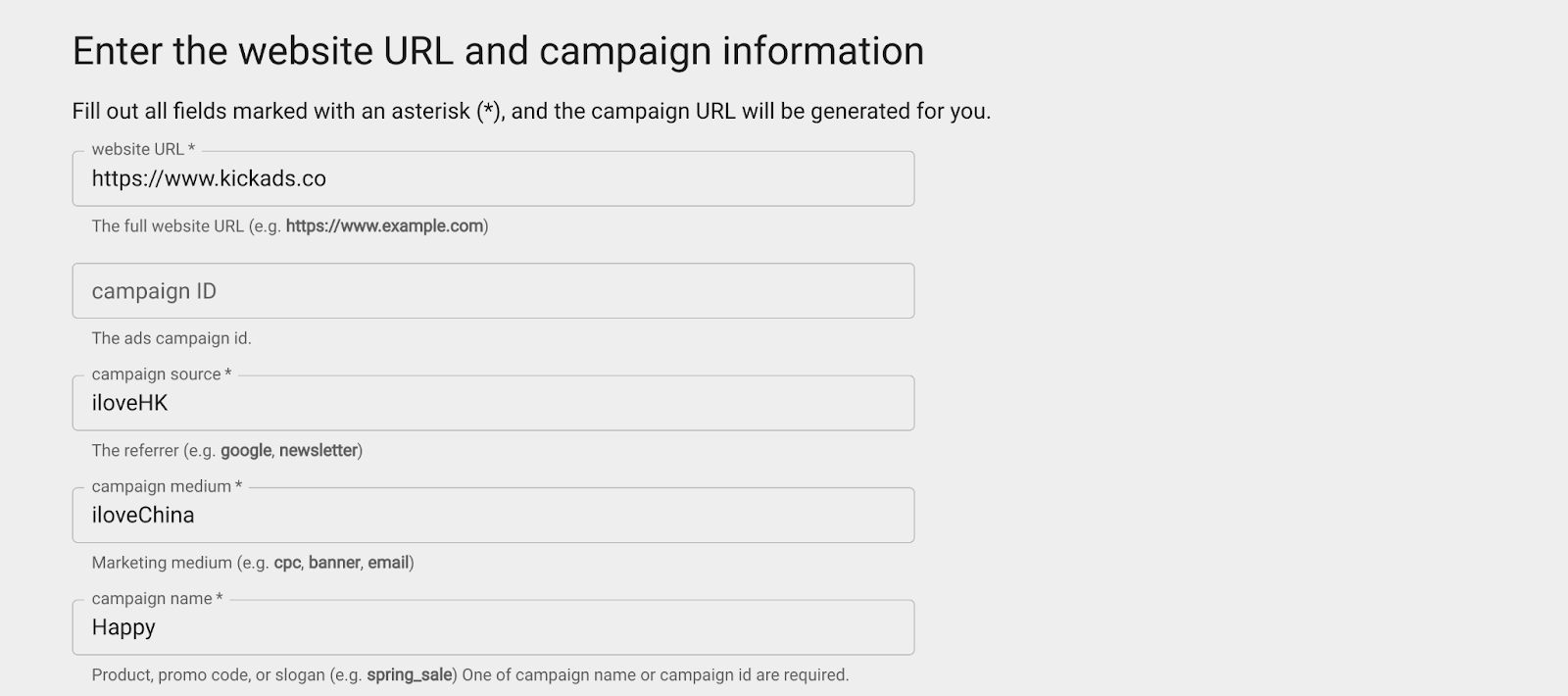
Through this article, we have gained a comprehensive understanding of various traffic sources in Google Analytics and how to track them. From direct traffic to social and affiliate traffic, analysing this data correctly helps optimise marketing strategies and improve return on investment. Mastering this knowledge is crucial for gaining deep insights into customer behaviour and enhancing website performance.
